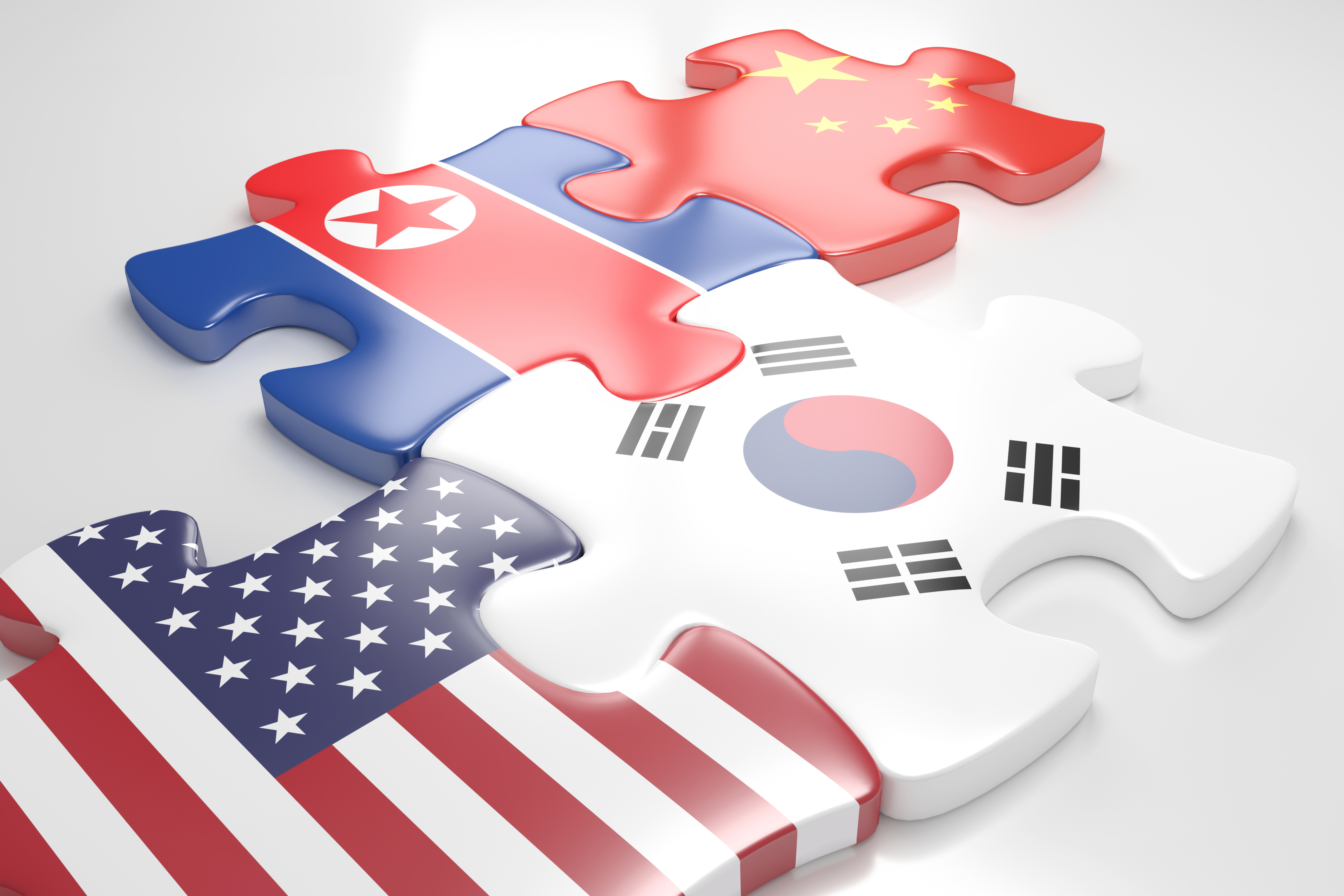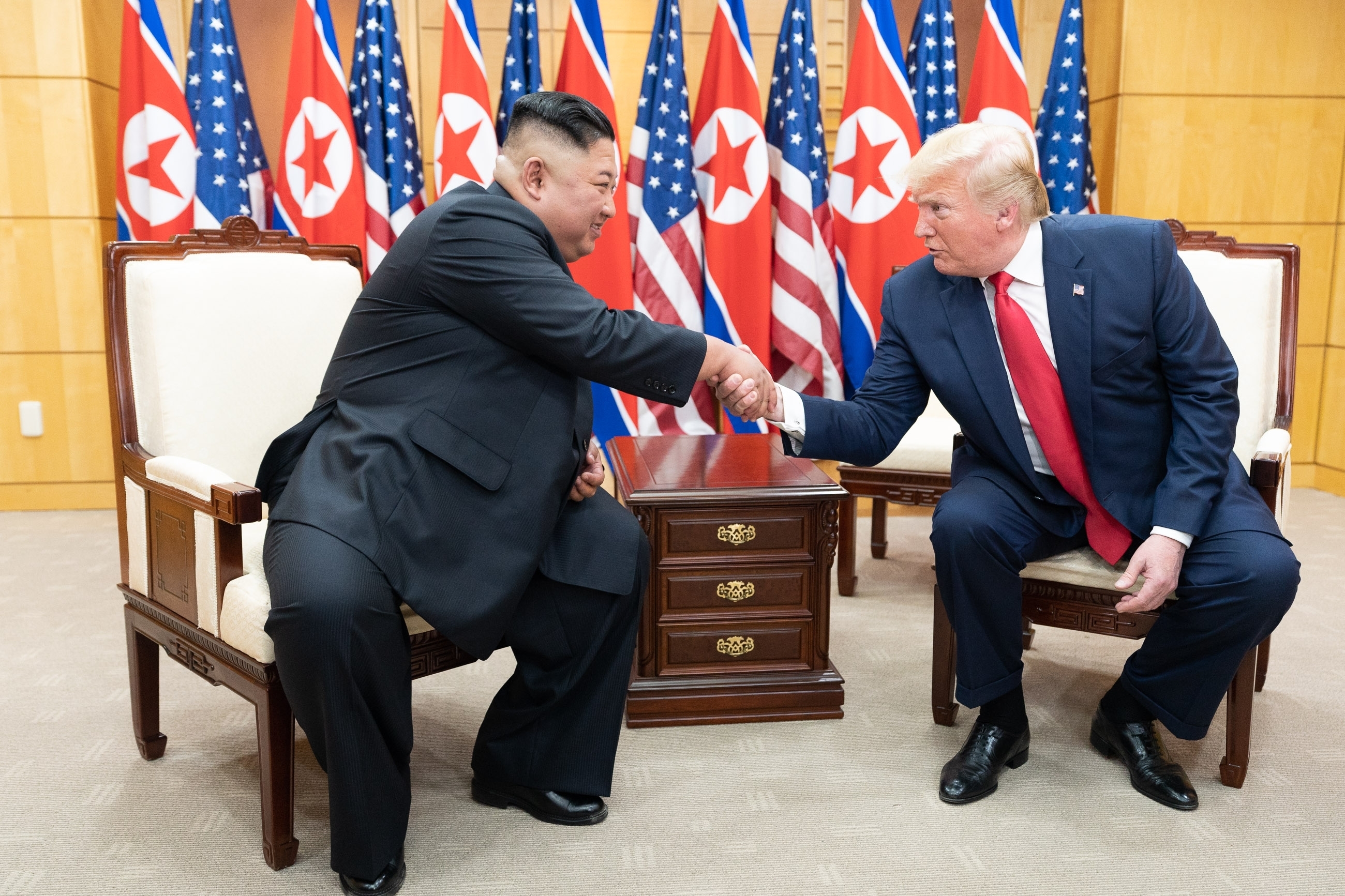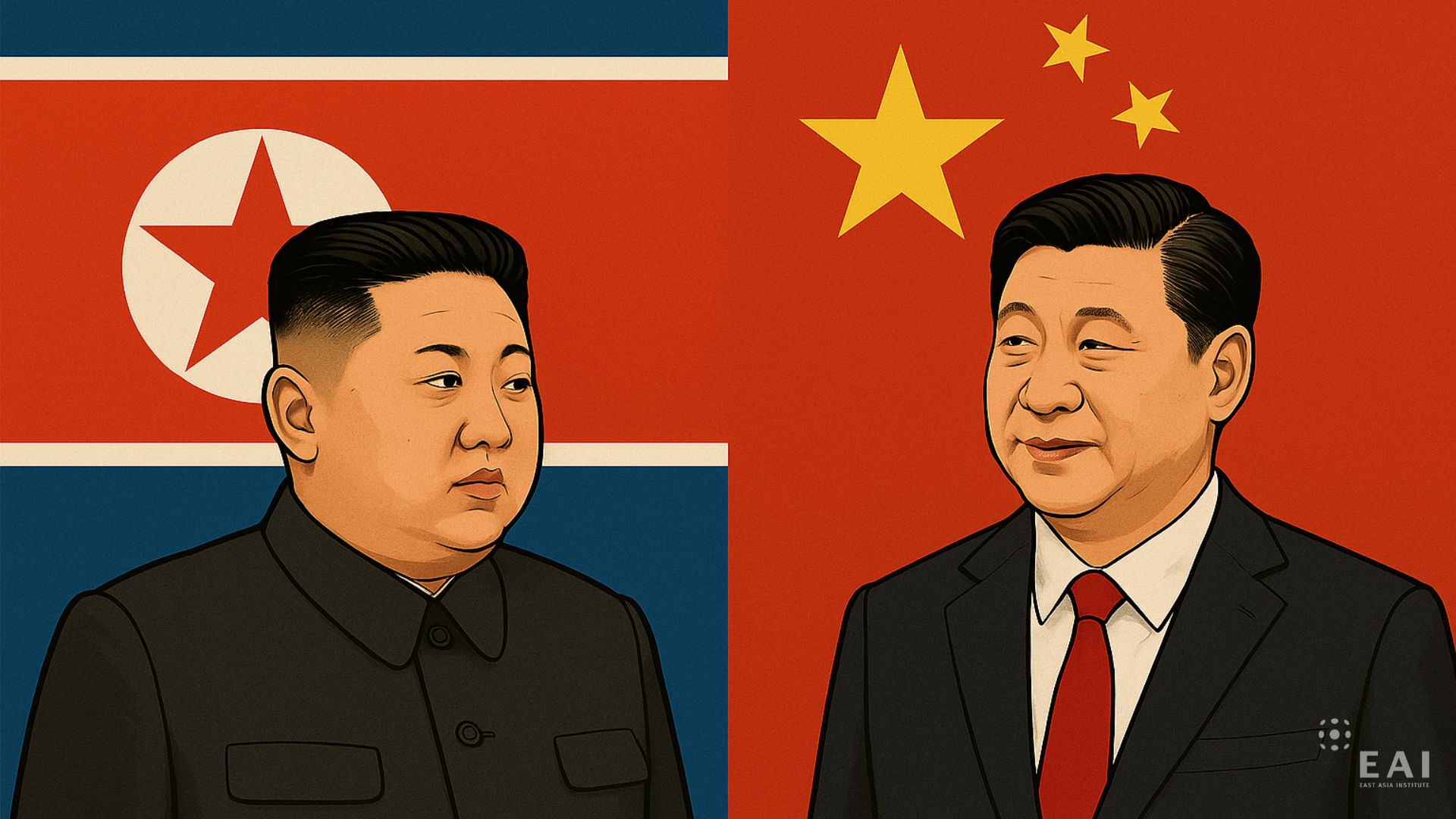■ See Korean Version on EAI Website
This year marks 75 years since the outbreak of the Korean War – which remains unresolved and exists in a state of armistice. John Mearsheimer, Professor at the University of Chicago and the card-carrying member of realism, likens the Russo-Ukrainian war to the Korean war and assesses that the former will also remain a frozen conflict. It is a terrible consequence if the war reaches a stalemate in its current state, in which Ukraine has lost one fourth of its territory. As such, the Korean War remains as a frozen conflict today with two divided countries. The peaceful resolution of the Korean war is an important matter for not just the two Koreas but all related states in the Northeast Asian region. This solution must start with the question of why the Korean War has yet to reach a resolution. Carl von Clausewitz famously asserted that all “war is a continuation of politics by other means.” Political objectives determine the start and end of wars. To understand the initiation and the resolution of the Korean war, we too must look at the political objectives of the leaders of the primary four states involved in the war: Kim Il-Sung, Rhee Syngman, Harry Truman, and Mao Zedong.
First, Kim Il-sung, the leader of North Korea who initiated the war, intended for a unification by force, through the absorption of South Korea. After each government was established in the North and South, both large and small armed conflicts continued to occur between across the 38th parallel –a temporary demarcation line—with each government claiming legitimate rule over the Korean Peninsula. Ultimately, Kim Il-sung determined to launch a surprise invasion because he calculated that the United States would not intervene militarily. This calculation arose in part due to a press statement by Dean Acheson, then U.S. Secretary of State, six months prior to the invasion. Acheson drew America’s first line of defense on the Pacific Front –what later became known as the Acheson Line—from the Japanese archipelago to the Philippines, with the Korean Peninsula notably missing. Kim Il-sung, interpreting that the Korean Peninsula was out of America’s line of defense in East Asia, convinced Stalin and Mao Zedong –who were initially concerned about an armed conflict with the U.S.—to support his plan for invasion.
Contrary to these calculations, U.S. President Truman decided to join the Korean War just one day after it broke out. What was the political objective in President Truman's decision to intervene in the war? Throughout the Korean War, the U.S. appeared to go back and forth over its basic objective in the war. Initially, the determined goal was to protect the South from the unilateral communist invasion, while simultaneously punishing North Korea’s military provocation. Immediately after World War II, the U.S. established the United Nations (U.N.) headquarters in New York and pushed for a new U.S.-led international order, which condemned any form of aggression as illegal. As such, Kim Il-sung’s southern invasion was a direct affront and a challenge to the basic principles of the U.N. and to America’s leadership. There were also geopolitical and military calculations in play in the decision to intervene, primarily that a communist takeover of the Korean Peninsula would put Japan –a key component of Acheson’s line of defense—in a risky position. Afterwards, in September 1950, once General MacArthur's Incheon Landing Operation changed the situation drastically, unification was established as the new war goal and the allied forces advanced further into the North Korean territory. However, the situation shifted again when Mao Zedong, who felt threatened by the U.S. military's approach to the North-China border, deployed a large-scale ground force in October of the same year. As a result, the war goal altered again to the restoration of South Korean territory and a quick end to prevent an all-out war with China and the Soviet Union.
Meanwhile, the South Korean government of Syngman Rhee pursued unification by northward advance as its war objective, taking advantage of American participation in the war. When the tide of the war turned with General MacArthur's Incheon Landing Operation, Rhee dreamed of unifying the Peninsula under the leadership of South Korea. Even after the Allied forces retreated due to Chinese intervention, Rhee's political goals remained unchanged. However, President Truman, concerned over the potential for another world war against China, as well as the Soviet Union, dismissed General MacArthur who insisted on using nuclear weapons against the Chinese military and hastened a ceasefire agreement to resolve the war which had reached a deadlocked situation. Following Truman, when the new Republican President Eisenhower came into power, he too pushed for a quick end to the war. President Rhee however refused to the sign the armistice agreement. This is why the armistice agreement includes China, North Korea, and the U.S., representing the U.N. forces, and excludes South Korea. Later, North Korea began pursuing a policy of "engage with the U.S., isolate the South", seeking dialogue with only the U.S. over military issues on the Korean Peninsula, including nuclear weapons, and excluding South Korea from these negotiations.
In the meantime, China's Mao Zedong, went against the counsel of his advisors who were reluctant about war against the U.S. and justified intervention in the war under slogan of "Resist America, Aid Korea; Defend the Homeland, Protect the Nation". He emphasized the duty of China to save North Korea from the invasion of the American Empire, highlighting the brotherly loyalty and comradery towards a fellow communist country, with whom they fought alongside the Japanese army during the Second Sino-Japanese War. This is why China calls the Korean War the War to Resist American Aggression and Aid Korea. However, more important in this decision was China's own security concerns as the South Korea-U.S. allied forces advanced toward the North Korea-China border. Under the slogan of "Protect the Nation, Defend the Homeland", the belief was that by aiding North Korea, one was essentially protecting one's own family and country. They were concerned that if unification was led by South Korea, this would result in the disappearance of North Korea as a strategic buffer. In the Korean War, China suffered over 900,000 casualties, including over 180,000 dead, including Mao Zedong's only son Mao Anying. Since then, Mao Zedong's intention to protect North Korea's strategic value as a buffer zone to block direct threats from the U.S. has continued to serve as the basic foundation for maintaining North Korea-China relations.
The Korean War was a war in which the different political objectives of the leaders of the four countries, North and South Korea, the U.S., and China, clashed. Kim Il-sung's policy of unification by force early in the war, and Rhee Syngman's unification by northward advance towards the end of the war had the character of total war, typified by completely destroying and absorbing the opposing regime. This basic framework remains unchanged today and serves as the context to why an armistice agreement, as opposed to a peace treaty endures 70 years to this day. In an armistice situation where the Korean War could resume at any time, the North and South live with the threat of total war lingering to break out at any moment,
The leaders of the U.S. and China, who acted as great power allies of the South and North, respectively, also had different calculations in the war. For Truman and Mao, the Korean War was a too big a war for their limited war objective. However, in the context of Cold War competition, it was a war that necessitated intervention due to each country's strategic advantage. Their objective was to prevent a direct confrontation and also to ensure that the Peninsula’s sphere of influence was not dominated by one side. Truman's entry into the war, as well as Mao Zedong's full-scale military intervention following the Allied forces’ northward advance, was a strategic decision to secure their own buffer zone, under the pretext of protecting the South and the North. The Korean War additionally had the character of a defensive limited war aimed at avoiding an all-out war between the U.S. and China. This explains why the armistice agreement was hastily concluded when the war reached a stalemate.
In 1953 the Korean War reached an armistice with no clear victor emerging and the entrenchment of the North-South division. However, historically, the division of the Korean Peninsula into North and South was discussed several times even before the Korean War. During the Imjin War in the late 16th century, the Ming Dynasty, which reluctantly dispatched troops to Joseon, discussed with Japan a plan to divide Chosun into the North and South and sign a ceasefire in order to quickly end the war. Similarly, in 1904, Russia, which was competing with Japan for dominance in Northeast Asia during the late Chosun Dynasty, proposed a compromise to Japan just before the Russo-Japanese War, to divide the Korean Peninsula along the 39th parallel. It may not be a historical coincidence that Russia and the U.S. agreed on the 38th parallel, following the liberation of Korea in 1945. The division of North and South served as a useful tool of compromise to maintain the balance of power for major powers that wanted to avoid a costly war.
The armistice was thus the product of a clash and a compromise between the North and South's desire for a total war as opposed to a limited war desired by their Chinese and American allies. Even today, the calculations by the U.S. and China vis-à-vis the Korean Peninsula remains unchanged. In fact, the U.S. and China may feel more burdened by the possibility of military intervention in a second Korean War than the two Koreas, due to the high causalities and fierce fighting that resulted from the first. This is the reason why China emphasizes stability and dialogue and the U.S. asks South Korea to respond with restraint when there is a military escalation between the two Koreas. In the 21st century, the U.S. and China are competing for global dominance beyond the Korean Peninsula at the regional and global levels. The political and military interests of the rapidly rising China and the U.S. superpower still remain the biggest variables that will ultimately determine the outcome of the war and the fate of the Korean Peninsula.
America has intervened in the war in Ukraine and recently in the war between Iran and Israel.
The Trump administration continues to call for a ceasefire between Russia and Ukraine, and between Iran and Israel. These actions are telling of the intentions of a great power that hopes to avoid entanglement in regional conflicts. The problem is that both an armistice and the resolution of a war is easier said than done. 75 years after, the Korean War offers insights amidst a new era of 21st century geopolitical competition. The Korean War, which after three years of fierce fighting was resolved with an armistice agreement –rather than a peace settlement—is a continuing war. The military standoff between the North and South across the demilitarized zone has not fundamentally changed. South Korea's active role in leading the declaration of the end of the war, negotiation of an Inter-Korean peace agreement, and the establishment of a peace regime on the Korean Peninsula –all based on democracy and strong deterrence against North Korea—is more important now than ever. ■
■ Seong-ho SHEENis Professor of International Security and East Asia at the Graduate School of International Studies at Seoul National University.
■ Translated and edited by Inhwan OH, Senior Research Fellow; Ahlim LEE, Research Assistant
For inquiries: 02 2277 1683 (ext. 202) | ihoh@eai.or.kr




